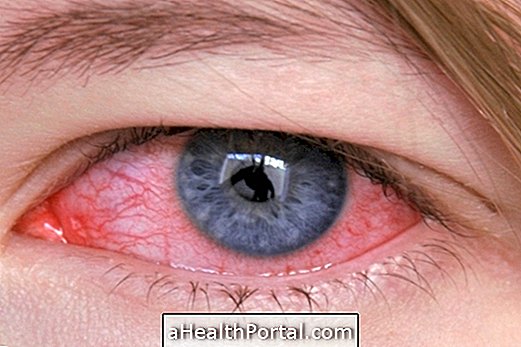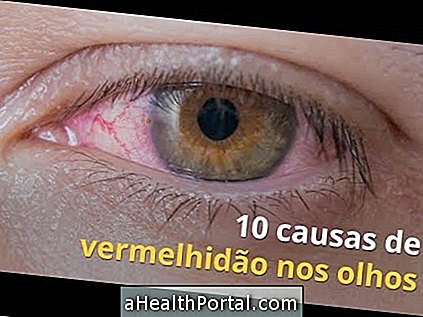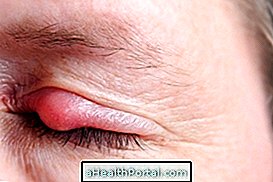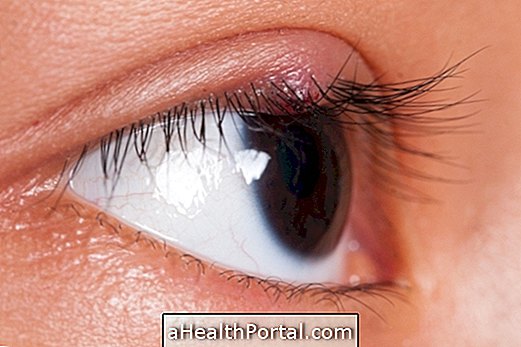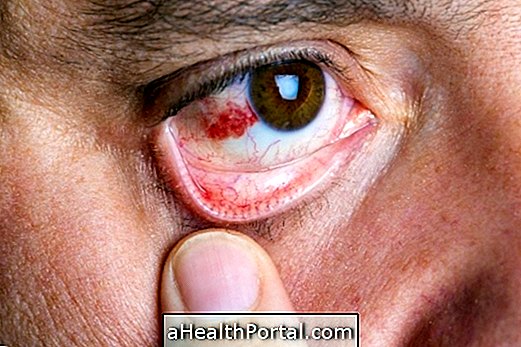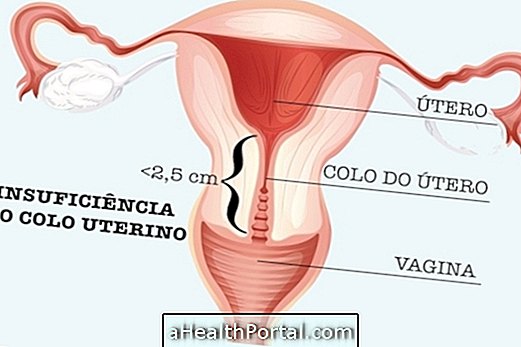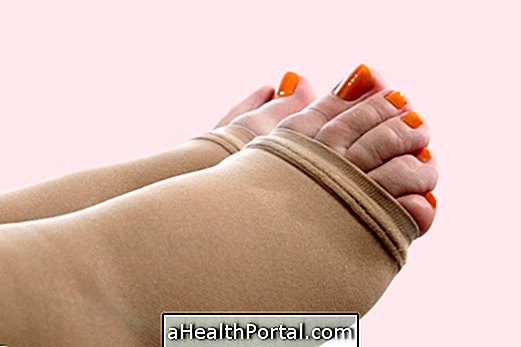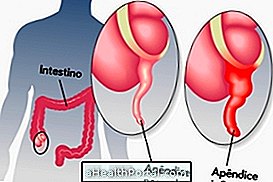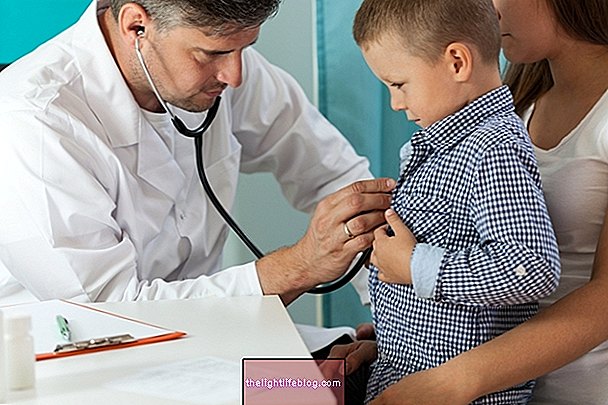Swelling in the eyes can have several causes, arising from less serious problems such as allergies or strokes, but can also happen due to infections such as conjunctivitis or stye, for example.
The swollen eye usually happens due to an accumulation of water that occurs in the tissues around the eye, such as in the eyelids or glands, and when it lasts for more than 3 days it is recommended to consult an ophthalmologist to diagnose the cause and initiate appropriate treatment, which may even involve the use of antibiotics.
In more rare cases, swelling can also be a sign of more serious health problems, such as changes in thyroid function, problems in the functioning of the kidneys or tumor in the eyelid, for example. However, these situations usually cause swelling in other regions of the body, such as face or feet.
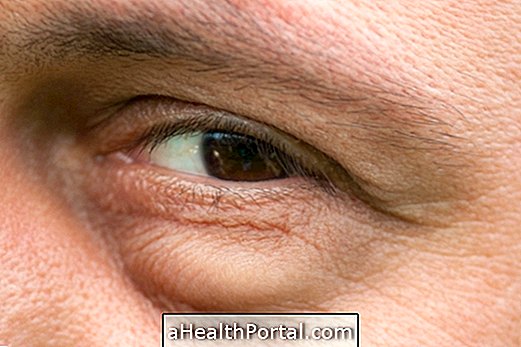
1. Terçol
The stye is an inflammation of the eye, caused by infection of the eyelash glands, which, in addition to causing swelling of the eyelid similar to a spine, also causes other symptoms such as constant pain, excessive tearing and difficulty opening the eye. Here's how to identify and treat the stye.
What to do: You can apply a warm water pack 3 to 4 times a day for 5 to 10 minutes to relieve the symptoms. If the stye does not disappear after 7 days it is advised to go to the ophthalmologist to identify the problem and start the appropriate treatment.
2. Conjunctivitis
While conjunctivitis is an infection of the eye itself leading to the appearance of red-eye, thick yellowish secretions, excessive sensitivity to light and, in some cases, the eye becomes swollen and also the eyelids.
What to do: Go to the ophthalmologist to identify the cause of conjunctivitis and start using anti-inflammatory eye drops that help reduce symptoms. If the problem is being caused by bacteria the doctor may also indicate the use of antibiotic eye drops or ointments. Find out which eye drops are most commonly used to treat conjunctivitis.
3. Allergy to pollen, food or medicines
When swelling in the eye arises along with other symptoms such as a stuffy nose, runny nose, sneezing or itchy skin, it may be caused by an allergy to some food, medicine, or even pollen.
What to do: Consult your doctor to find out the source of the allergy, and in most cases treatment with antihistaminic medicines such as Cetirizine or Hydroxyzine may be recommended.
4. Kidney disorder
Swollen eyes may also indicate some impairment of blood flow to the kidneys, especially if other regions of the body are also swollen, with the legs, for example.
What to do: It is important not to scratch the eye and apply saline or moisturizing drops like Dunason, Systane or Lacril. It is also advised to go to the doctor to perform tests that can indicate if there is really any renal impairment, and start treatment with diuretic medicines, if necessary.
If you suspect you may be having kidney problems, check the following symptoms:
- 1. Frequent urge to urinate Yes No
- 2. Urinate in small quantity at a time Yes No
- 3. Constant pain in the bottom of the back or flanks Yes No
- 4. Swelling of the legs, feet, arms or face Yes No
- 5. Itching all over the body Yes No
- 6. Excessive tiredness for no apparent reason Yes No
- 7. Changes in color and smell of urine Yes No
- 8. Presence of foam in the urine Yes No
- 9. Difficulty sleeping or less sleep quality Yes No
- 10. Loss of appetite and metallic taste in the mouth Yes No
- 11. Feeling of pressure in the belly while urinating Yes No

5. Insect bite or blow to the eye
Although rare, insect bites and eye bumps can also cause eye swelling, and these problems are more common in children, especially during impact sports such as football or running.
What to do: pass a small pebble of ice to the affected area as the cold decreases the itching and inflammation. In the case of a bite, it is also important to be alert to the appearance of other symptoms such as difficulty in breathing, redness or itching of the skin, as they may be signs of an allergic reaction that requires immediate medical treatment.
6. Blepharitis
Blepharitis is an inflammation of the eyelid that may appear overnight and occurs when one of the glands that regulates oiliness is blocked, being frequent in people who rub their eyes frequently. In these cases, in addition to the swelling is also common the appearance of pimples and the sensation that there is a speck in the eye.
What to do : Put a warm compress on the eye for about 15 minutes to relieve discomfort. Afterwards, you should wash your eye every day with a moisturizing eye dropper in order to remove the pimples and avoid excess bacteria. Check out more tips on how to deal with this issue.
7. Orbital cellulitis
This type of cellulitis is a serious infection of the tissues around the eye that can arise due to the passage of bacteria from the sinuses to the eyes, being, for this reason during sinusitis or colds, for example. In these cases, other symptoms such as fever, pain when moving the eye and blurred vision may appear.
What to do : The treatment needs to be done with antibiotics, and it is recommended to go to the hospital immediately as soon as suspicion of an orbital cellulitis appears.
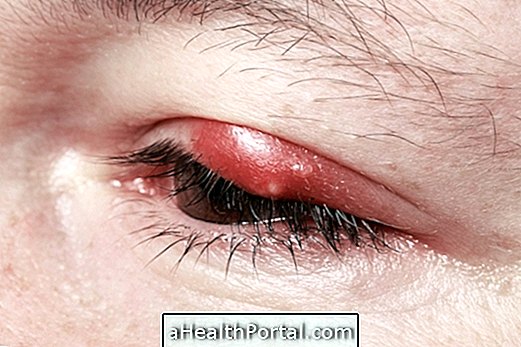
What can make the eye swollen in pregnancy
Swelling in the eyes during pregnancy is a very common problem, which is usually related to the effect of hormones on the superficial veins of the skin. So, what happens is that the veins become more dilated and accumulate more liquids, causing the appearance of bumps, in the eyes, face or feet.
This symptom is normal, but when the swelling grows too fast or when it is accompanied by other symptoms such as headache or high blood pressure, it is recommended that you see your doctor for possible complications such as pre-eclampsia.
